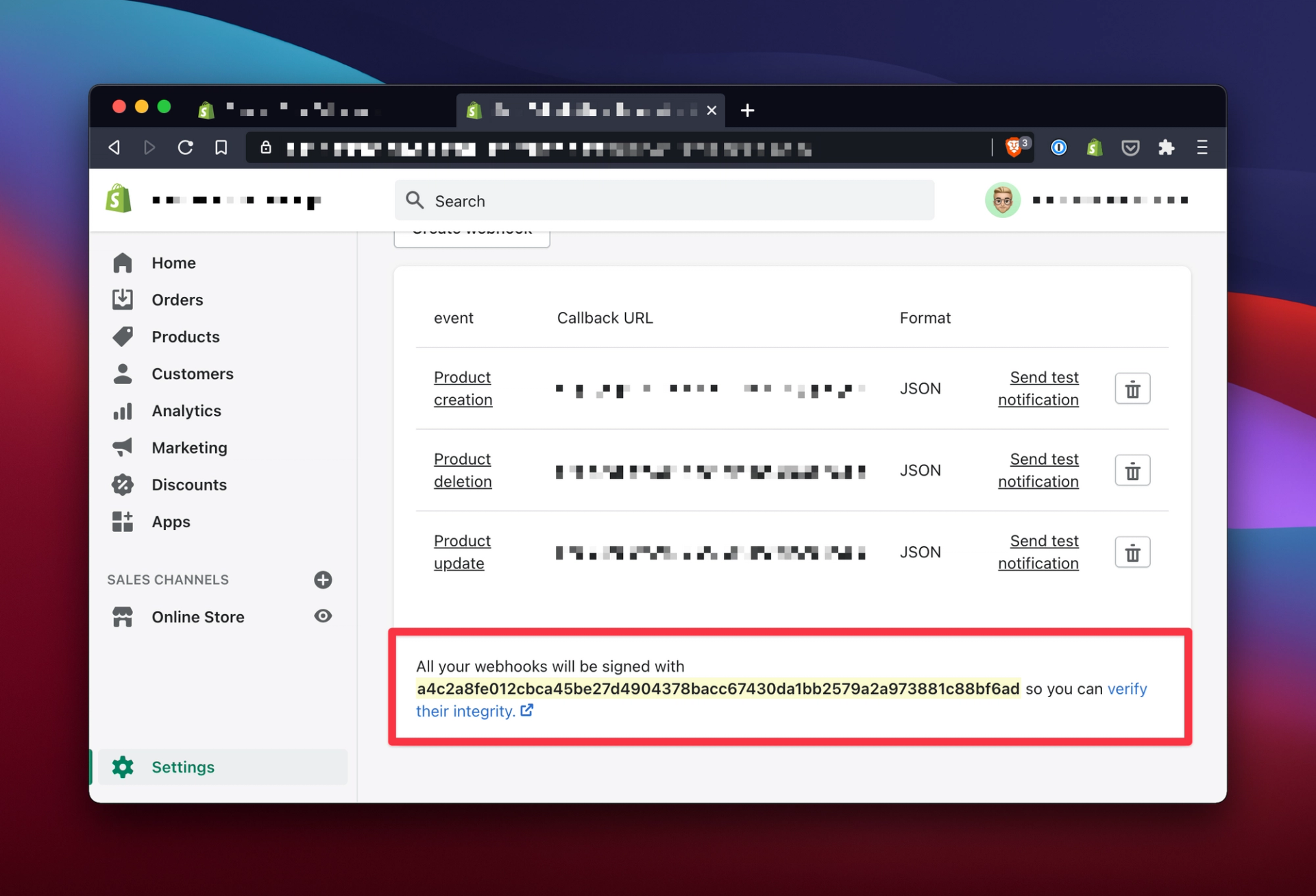Verifying Your Shopify Webhooks in Next.js APIs
In my last post I've illustrated a basic approach to synchronize Shopify product data with your headless CMS using serverless functions. To avoid unwelcome API calls and even malicious attempts to modify your data we can use a HMAC based verification procedure provided by Shopify.
Using a secret key we can digest the request body into a HMAC hash. Comparing this to a HMAC hash provided in the request headers we can determine if the request is valid or not. Just a few modifications to our API are needed to verify the origin of received webhooks and ensure the integrity of our sync workflow.
Prerequisites
In this example I am working with serverless functions provided by Next.js built-in API routes on Vercel. Any other framework or platform deploying Node based serverless or lambda functions should work just fine as well, though. Additionally, you'll need a Shopify shop instance to get your webhooks from. You usually can create one for free as a developer. I continue to build on the example I've discussed in my last post.
You will also need a secret key to digest the request body into a HMAC hash. You can find it in the "Notification" settings of your store dashboard at the very bottom. I'd recommend storing it in an environment variable in your project to keep it safe and sound.

Raw Body Needed
In my first approach of setting this up for a client, I've come across this nasty pitfall: To generate the correct HMAC digest out of the webhook request body and the secret key, we need the requests raw body. Next.js gives you the option to deactivate the default body parser. This requires that we handle the http.IncomingMessage Stream ourselves and extract the requests Buffer from within. We will use a library called raw-body to do exactly this job for us.
import getRawBody from 'raw-body'
export default async function (req, res) {
// We need to await the Stream to receive the complete body Buffer
const body = await getRawBody(req)
// ...
}
// We turn off the default bodyParser provided by Next.js
export const config = {
api: {
bodyParser: false,
},
}Creating the HMAC Digest
Now that we got the raw body Buffer stored in a variable, we digest the raw body into a hmac hash using our secret key and compare it with the X-Shopify-Hmac-SHA256 header string in the end. Since the HMAC header is base64 encoded, we need to encode our digest as well. If the digest and the header are equal, the webhook can be deemed valid.
To create a hmac digest, Node provides us with the crypto module and its crypto.createHmac() method. We import the module into our API route and feed in the data we prepared in the previous steps. For more information on the crypto module, have a look at the official documentation.
import getRawBody from 'raw-body'
import crypto from "crypto"
export default async function (req, res) {
// We need to await the Stream to receive the complete body Buffer
const body = await getRawBody(req)
// Get the header from the request
const hmacHeader = req.headers['x-shopify-hmac-sha256']
// Digest the data into a hmac hash
const digest = crypto
.createHmac('sha256', process.env.SHOPIFY_SECRET)
.update(body)
.digest('base64')
// Compare the result with the header
if (digest === hmacHeader) {
// VALID - continue with your tasks
res.status(200).end()
} else {
// INVALID - Respond with 401 Unauthorized
res.status(401).end()
}
}
// We turn off the default bodyParser provided by Next.js
export const config = {
api: {
bodyParser: false,
},
}Wrapping Up
Keeping the data transfers concerning pricing and inventory safe is certainly a critical feature to headless e-commerce in general. With just a few lines of code you're able to leverage the validation built into Shopify webhook system in your serverless functions.